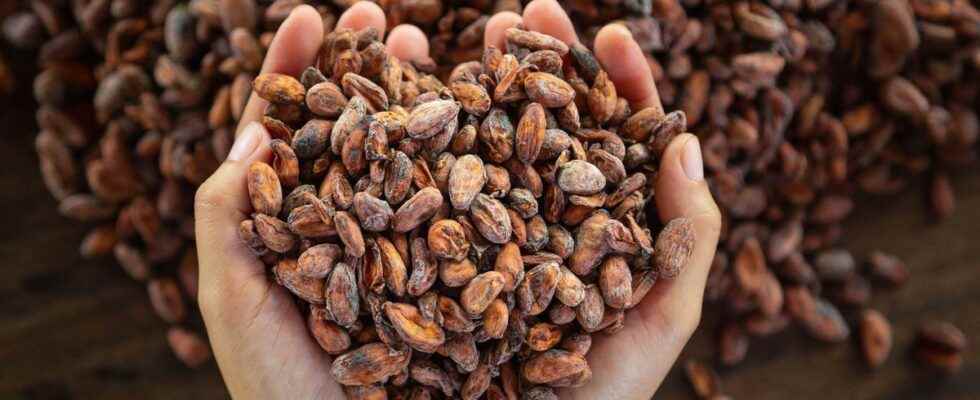Published on
Updated
Reading 3 mins.
While a survey by the Avicenn association has just revealed the presence of nanoparticles in everyday products, some of which are potentially dangerous for health, we discover in the United States the presence of heavy metals in a food above all hint: dark chocolate. As the holidays approach, should we deprive ourselves of our chocolate confectionery?
A few days before Christmas Eve, it is a publication that has the effect of a small bomb in the United States. The reference of consumer associations, Consumer Reports, reveals to have detected heavy metals in a sample of 28 bars of dark chocolate. While this variety of cocoa benefits from a better nutritional image due to its richness in antioxidants and its lower sugar content compared to milk chocolate, analyzes have revealed the presence of lead and cadmium. These are the dose limits recommended by the State of California which were used as a reference to judge whether a product contained too many heavy metals. These findings raise serious questions because prolonged exposure to lead or cadmium, even in small amounts, can lead to brain development problems. Young children and pregnant women are among those at risk. But everyone is affected. “Frequent exposure to lead in adults, for example, can lead to nervous system problems, high blood pressure, immune system suppression, kidney damage and reproductive problems.“, emphasizes Consumer Report, through the voice of its food safety researcher.
If only five tablets are considered safe, all the samples of the analysis have shown to have in their recipe the two incriminated materials. And there is a reason. Regarding cadmium, this metal that is used to make television screens or to metallize surfaces is in fact found naturally in the ground. Cocoa plants even have the ability to absorb it, which has the effect of accumulating this metal in the beans. As for lead, the metal is found on the husk of cocoa beans after harvest. Its presence is accentuated as the beans dry in the sun, in part because dust and dirt come to increase the lead content, according to Consumer Report. The observation established, there are solutions to avoid having these heavy metals in our square of chocolate. The cocoa beans should not touch the ground, or renew the cocoa trees to use the fruits of younger specimens which have not yet had time to take on cadmium.
NO to diets, YES to WW!
What are the risks for our health?
Should we review our chocolate consumption given these revelations? Yes if you eat it every day. According to Consumer Report, this type of indulgence should be limited because black gold is not the only food to contain cadmium. If there are any in cigarettes, consumers are also exposed to them with bread, cereals, potatoes or even shellfish, which are the most contaminated foods according to the cancer center of Lyons (Léon Bérard). It is better to favor dark chocolate bars with a lower cocoa content as a precaution. The cadmium level would increase with the percentage of cocoa.
These analyzes being American, we are entitled to wonder about the need to worry when we bought our chocolate in Europe or elsewhere. Note that the Consumer Report sample includes brands such as Lindt, which Europeans obviously know well. It remains to be seen whether the product tested corresponds to the same recipe marketed on the old continent. The analyzes also concerned Tony’s chocolate, available in concept stores or duty free in Europe…
For Europeans, the subject is actually not so new. In France, the Directorate General for Competition, Consumer Affairs and Fraud Prevention (DGCCRF) had seized ANSES, the health security policeman, because of too high a cadmium content in seaweed, used especially in Japanese cuisine. The latter then confirmed in 2020 that overruns were very frequent.
Each year the DGCCRF checks whether consumers are not too exposed to heavy metals by carrying out checks on various foods. When a sample does not comply with the regulatory doses, various decisions can be taken, such as the return of the said product to the country of origin, a further investigation to carry out additional analyzes or issue an alert notification. In short, we can serenely bite into our square of dark chocolate near the Christmas tree, in moderation!
